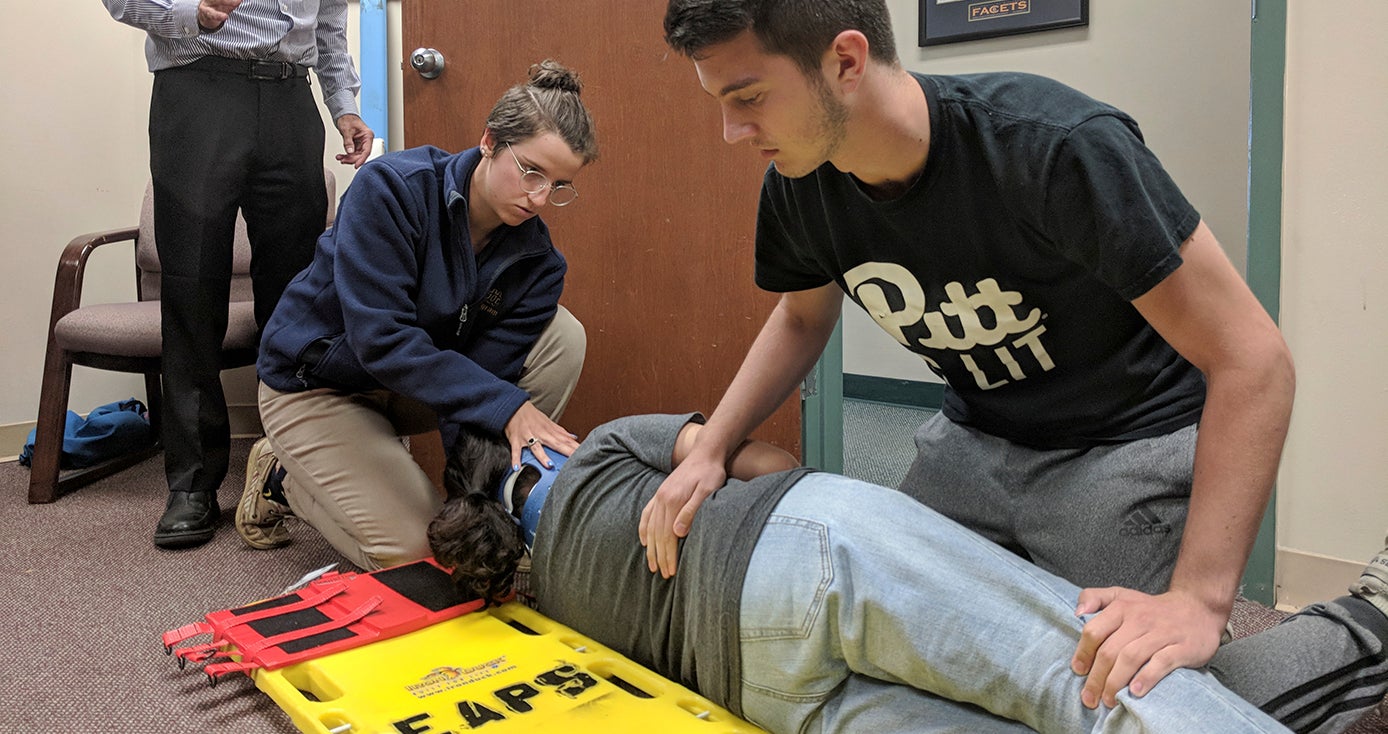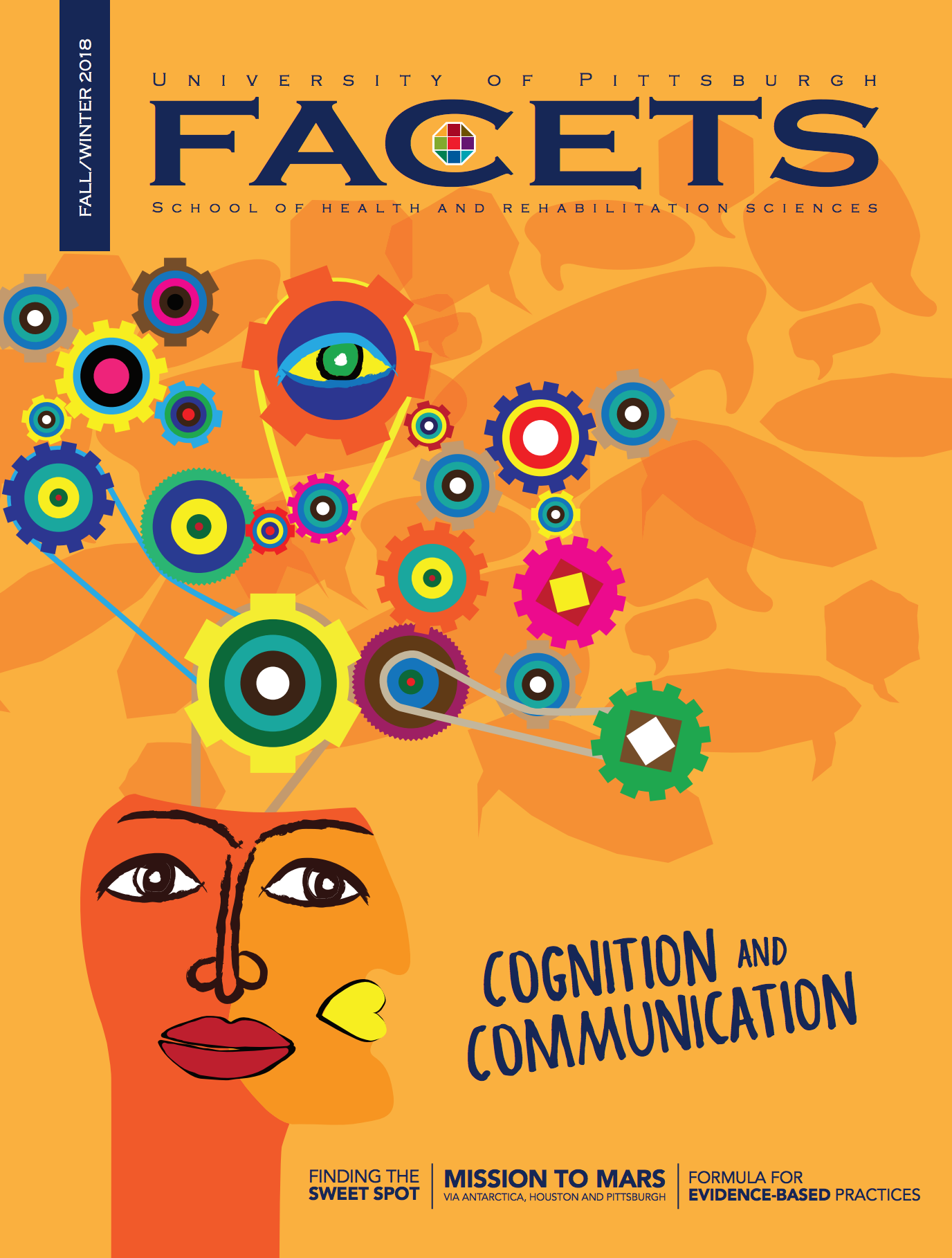
Subscribe to Pittwire Today
Get the most interesting and important stories from the University of Pittsburgh.Emergency Medicine Course Prepares First Responders to Think Fast and Slow
This story originally appeared in the fall/winter 2018 issue of FACETS magazine.
On television, the drama is high. First responders arrive on the scene just in time to make a snap decision that saves a patient’s life. We all breathe a sigh of relief and tune in next week when it happens all over again. But according to Paul Paris, a professor in Pitt’s School of Medicine, making the best clinical decision doesn’t just happen. It involves a wealth of complex thinking — and some biases.
In his undergraduate course Cognitive Psychology of Decision Making, held each semester, Paris helps students in the School of Health and Rehabilitation Sciences’ Emergency Medicine Program (EM) gain a better understanding of the decision-making process in order to avoid errors and improve patient outcomes.
The primary text for the course is “Thinking, Fast and Slow” by Nobel Prize winner Daniel Kahneman, which presents a dual theory of decision making. “Medical practitioners use intuitive reasoning — a shoot-from-the-hip approach — as well as analytical reasoning — a slow, deliberate and cautious approach,” said Paris. “One way is not always the right way. There’s a fine balance between thinking too fast and thinking too slowly.” Paris said there are also conscious and unconscious biases that interfere with sound clinical judgment.
“Biases are not just about race, gender or economic class,” Paris said. “As first responders, we may make snap decisions when we walk into a particularly hectic environment. Maybe we suspect some underlying problem like drugs or domestic abuse that influences our judgment about the patient’s current condition. Perhaps we’re stressed out about something in our personal lives. Or maybe we are simply overly tired or hungry, and we’d like our shift to end.”
According to EM Program Director and Associate Professor Thomas Platt, “When students become more aware of all of the factors that impact their thinking, they become better prepared to move into roles that require them to consistently make sound clinical judgments.”
Paramedic and EMT Instructor Aryana Jones (SHRS ’18) said this was one of the most influential courses that she took during her senior year of the Emergency Medicine program. “At first, many of the biases Dr. Paris discussed, such as fatigue, seemed inconsequential. But I soon realized when working the night shift on an ambulance and other jobs during the day that fatigue would certainly be a major factor. Mentally replaying Paris’ advice to be consciously aware of this bias and not letting it affect patient treatment has helped me through some pressure situations.”
Paramedic Stephen Worrall (SHRS ’17) agreed. “It is very easy to get engrossed in a culture or into a call that sets you up for failure. This course allowed me to be able to identify some of those ‘red flags’ that could cause me to falter in judgment.
“It also made me more aware of the different ways to think about a patient’s condition and what could be causing it,” Worrall said. “This allows me to render more thorough, and potentially more accurate, patient care.”
As part of the coursework, Paris and his students hold weekly discussions about recent cases. They talk about what they were thinking when they were on the call, what situations may have interfered with their clinical decision-making, and what they could have done differently to avoid errors or improve outcomes.
“In emergency medicine, there’s very little feedback, so it’s difficult for providers to evaluate their judgment,” said Paris. “In this course, students get feedback, both from me and from other students.”
“The most valuable thing I learned was the pathways in which medical professionals make decisions and aspects of ourselves and our work environments that affect that decision making, both in positive and negative ways,” said Jones. “When we are aware, we can work to enhance or counteract those influences in order to provide the highest level of patient care.”
“I learned to never go into a call or into a patient interaction thinking that it is going to be typical,” added Worrall. “When we start to lose focus on our goal, that is when we are most likely to make a mistake that can potentially lead to a detrimental patient outcome.”
“The goal of any undergraduate education is to teach students how to think,” said Platt.
“What’s unique about Dr. Paris’ course is that he challenges his students to think about what they’re thinking, and how to overcome biases they may not even realize they have. When our EM alumni move on to graduate or professional programs, they will already have great clinical thinking skills,” he said. “This will make them even better clinicians.”



